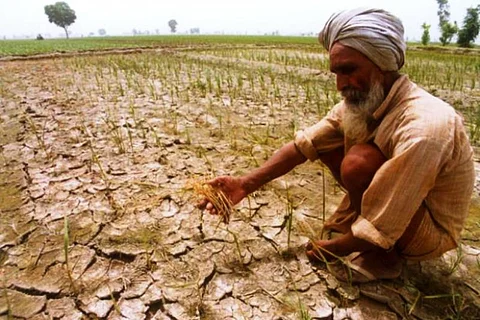

With tensions across the state building up in the aftermath of the Cauvery river dispute, the Karnataka government declared 42 more Taluks as drought affected, taking the total number to 117 out of 177 taluks in the state.
The declaration that was made in the first week of October came in close heels after the government declared 68 taluks as drought hit only a week before this.
Reports quoted Law and Parliamentary Minister TB Jayachandra as saying that another 50 taluks are expected to be added to the list over the next six months, confirming that the crisis was severe than the previous year.
Deepthi Sanjiv reports for The Times of India that environmentalists point to one of the difficult summers for the state.
Dinesh Holla, the convener of Sahyadri Sanchaya that works for the conservation of the Western Ghats, says that little is left of Netravathi and its tributaries.
"We have been trekking for the past 22 years and are familiar with the region and its changing patterns. Every year, Sahyadri Sanchaya organises monsoon treks. From August to October, water flow in Netravathi (which originates in the Western Ghats) and its nine tributaries and 42 streams should be at its peak. But not this time. Its many waterfalls, that should be gushing in full strength, are also noticeably weak," he was quoted as saying.
According to him, the situation in the Western Ghats is what it normally looks like during the period of January to March. With Dakshina Kannada facing water crisis for the first time, the heat of the matter is likely to be felt by the entire state in the coming years, he believes.
"If the rainfall is scarce at the river source, next year, the capacity of the Shola forest to retain rainfall automatically reduces. If the rain water for storage has to reach from grasslands to Shola forest, then the rain from June-October has to be at its peak,” he said.
Holla believes that apart from developmental projects, forest fire, encroachments and hunting were a major cause for the destruction of the Western Ghats.